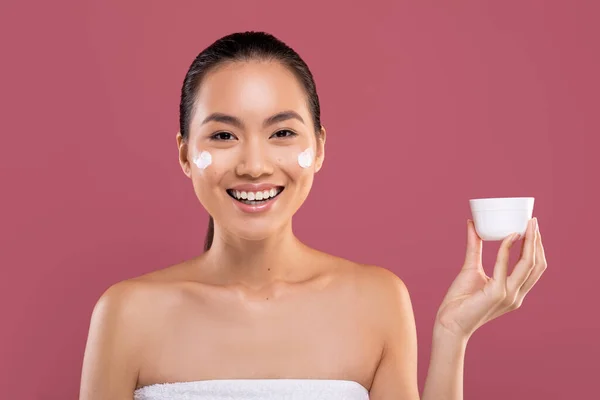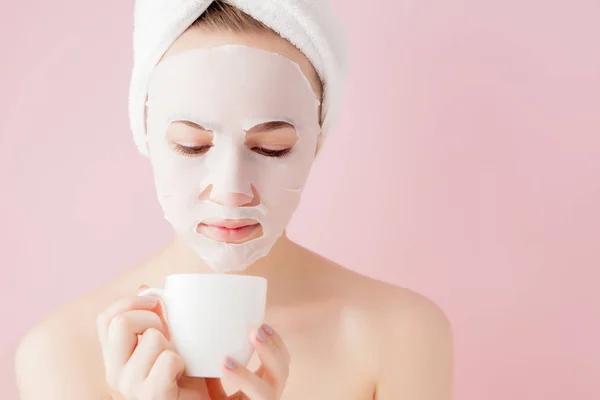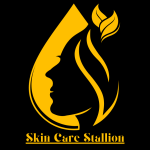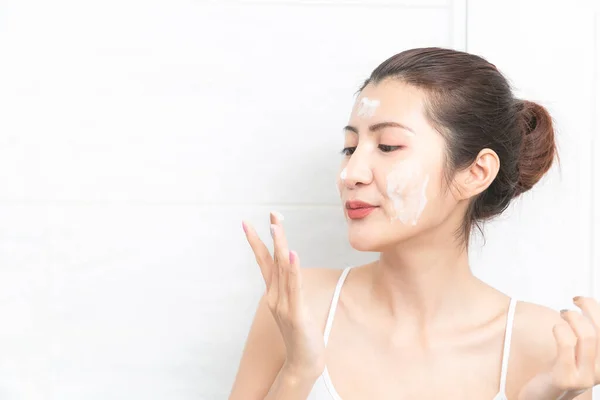“How Much Skincare Product to Use: Finding the Right Amount for Your Child’s Sensitive Skin”
In the quest for flawless, healthy skin, using the right What Skincare Products Should Be Refrigeratedskincare products is only half the battle knowing how much to use is the crucial other half. Too little product might leave your skin yearning for more, while too much can lead to waste and even adverse reactions.
Navigating this fine balance can be a skincare conundrum for many. In this article, we demystify the perfect amounts of each product to ensure your skincare routine is both effective and efficient, helping you achieve that coveted glow without any guesswork.

How Much Skincare Product To Use
How Much Skincare Product to Use for Optimal Results
Knowing the right amount of skincare product to use is crucial for effective results. Using too little might not give the desired benefits, while using too much can lead to product wastage or skin irritation.
Generally, follow the guidelines for each type of product: a pea-sized amount for creams and serums, a dime-sized amount for sunscreen, and a nickel-sized amount for cleansers.
Consistency and moderation are key to achieving healthy, glowing skin. Tailoring the amount to your skin’s needs ensures optimal absorption and efficacy.
Moisturizers and Serums
For moisturizers and serums, a little goes a long way. Typically, a pea-sized amount is sufficient for your entire face. This small quantity ensures that your skin absorbs the product without feeling greasy or overloaded. Serums, packed with active ingredients, should be used sparingly to prevent irritation and maximize benefits.
Sunscreen Application
Sunscreen is crucial for protecting your skin from harmful UV rays. A dime-sized amount for your face and neck is usually recommended.
This ensures even coverage and adequate protection. Phrases such as “broad-spectrum protection,” “reapply every two hours,” and “SPF 30 or higher” are commonly used when discussing sunscreen. Remember, consistent and adequate application is essential to prevent sun damage and maintain skin health.
Cleansers and Exfoliators
For cleansers, a nickel-sized amount is generally enough to remove dirt and impurities. This quantity allows for a thorough cleanse without stripping the skin of its natural oils. Exfoliators should also be used in moderation, about twice a week, to avoid over-exfoliation which can lead to irritation.
Terms like “gentle scrubbing,” “circular motions,” and “rinse thoroughly” are often mentioned in this context. Proper use ensures your skin remains clean and refreshed without damage.
Eye Creams and Spot Treatments
Eye creams should be used sparingly, with a pea-sized amount for both eyes. This delicate area requires minimal product to avoid puffiness and irritation. Spot treatments for acne or hyperpigmentation should be applied precisely with a tiny dab.

Understanding Skincare Product Quantities
General Guidelines for Product Amounts
When it comes to skincare, using the right amount of product is crucial. A pea-sized amount of cleanser is usually sufficient for the face. For moisturizers, a nickel-sized amount is typically recommended. Sunscreen should be applied generously, about a teaspoon for the face and neck.
Factors Influencing the Amount Needed
Skin Type
Oily skin might require less moisturizer compared to dry skin, which may need a more generous application to stay hydrated.
Product Formulation
Concentrated serums require just a few drops, while lighter formulations might need more for full coverage.
Specific Skin Concerns
Addressing concerns like acne or eczema often requires precise amounts of treatment products as prescribed by a dermatologist.
Seasonal Changes
In winter, skin tends to be drier and may need more moisturizing products, while in summer, lighter applications might suffice due to increased humidity.
Breakdown by Product Type
Cleansers
Gel Cleansers
Gel cleansers are popular for their refreshing feel. They effectively remove dirt and oil without stripping the skin. Ideal for oily and combination skin types, gel cleansers leave your skin feeling clean and balanced.
Cream Cleansers
Cream cleansers are perfect for dry or sensitive skin. They hydrate while cleansing, maintaining the skin’s moisture barrier. Often described as soothing and nourishing, cream cleansers leave your skin feeling soft and supple.
Foam Cleansers
Foam cleansers create a rich lather that lifts away impurities. They are loved for their deep-cleansing properties and are best for normal to oily skin types. Foam cleansers provide a squeaky-clean finish without over-drying.
Oil Cleansers
Oil cleansers dissolve makeup and impurities effortlessly. Suitable for all skin types, especially dry skin, they leave your skin feeling clean and hydrated. Oil cleansers are often described as luxurious and gentle.
Toners
Hydrating Toners
Hydrating toners replenish moisture and prepare the skin for better absorption of other products. They are essential for maintaining skin hydration and are described as refreshing and soothing.
Exfoliating Toners
Exfoliating toners help remove dead skin cells and improve skin texture. They are known for their brightening and smoothing effects, making the skin look more radiant and even-toned.
Serums and Treatments
Hydrating Serums
Hydrating serums are packed with ingredients like hyaluronic acid to boost moisture levels. They leave the skin plump and hydrated, commonly described as revitalizing and nourishing.
Anti-Aging Serums
Anti-aging serums target fine lines and wrinkles. They often contain ingredients like retinol and peptides, promoting firmer and youthful-looking skin. They are known for their restorative and firming properties.
Brightening Serums
Brightening serums reduce dark spots and promote an even skin tone. Vitamin C is a common ingredient, known for its brightening and radiance-enhancing effects. They are often described as illuminating and revitalizing.
Acne Treatments
Acne treatments focus on reducing blemishes and preventing breakouts. Salicylic acid and benzoyl peroxide are common ingredients. These treatments are known for their clarifying and purifying effects.
Moisturizers
Gel Moisturizers
Gel moisturizers provide lightweight hydration. They absorb quickly, making them ideal for oily and combination skin. Gel moisturizers are often described as refreshing and cooling.
Cream Moisturizers
Cream moisturizers offer rich hydration, perfect for dry skin. They maintain the skin’s moisture barrier and leave the skin feeling soft and smooth. They are often described as nourishing and emollient.
Lotions
Lotions provide balanced hydration and are suitable for all skin types. They are lighter than creams but more hydrating than gels, often described as silky and lightweight.
Sunscreens
Chemical Sunscreens
Chemical sunscreens absorb UV rays and transform them into heat. They are lightweight and often formulated for a non-greasy finish. Described as invisible and comfortable, they provide effective sun protection.
Physical Sunscreens
Physical sunscreens, also known as mineral sunscreens, reflect UV rays. They are ideal for sensitive skin and provide broad-spectrum protection. Often described as natural and gentle, they are effective against sun damage.
Eye Creams
Eye creams target dark circles, puffiness, and fine lines around the eyes. They are often enriched with peptides and antioxidants, described as rejuvenating and firming, providing targeted care for the delicate eye area.
Exfoliants
Physical Exfoliants
Physical exfoliants use granules to manually remove dead skin cells. They leave the skin feeling smooth and polished, often described as invigorating and refreshing.
Chemical Exfoliants
Chemical exfoliants use acids to dissolve dead skin cells. They improve skin texture and tone, known for their brightening and smoothing effects, often described as gentle and effective.
Masks
Sheet Masks
Sheet masks are soaked in serum and provide intense hydration and treatment. They are easy to use and often described as pampering and revitalizing.
Clay Masks
Clay masks absorb excess oil and detoxify the skin. They are perfect for oily and acne-prone skin, often described as purifying and clarifying.
Overnight Masks
Overnight masks provide deep hydration and treatment while you sleep. They are known for their intensive and restorative effects, often described as rejuvenating and nourishing.

Recommended Amounts for Each Product Type
When it comes to skincare routines, using the right amount of each product ensures effectiveness without wastage. For cleansers, opt for a pea-sized amount of gel cleansers, a nickel-sized amount for cream cleansers, a golf ball-sized dollop for foam cleansers, and a quarter-sized portion for oil cleansers.
Hydrating toners require just a few drops, while exfoliating toners are best applied with a small cotton pad. Serums like hydrating, anti-aging, and brightening variants benefit from a pea-sized application, while acne treatments should be used sparingly as spot treatments.
For moisturizers, a dime-sized quantity of gel types and a nickel-sized amount of creams suffice, while lotions require about a quarter-sized dollop. Sunscreens, crucial for protection, need a quarter teaspoon for both chemical and physical types when applied to the face.
Eye creams are effective with a rice grain-sized dab, and exfoliants, whether physical (nickel-sized) or chemical (a few drops), should be used accordingly. Masks, ranging from sheet to clay and overnight variants, are optimally applied in the suggested amounts for maximum benefits.
Application Techniques
To effectively apply skincare products, follow these steps for each type:
Cleansers
Start with a dime-sized amount, massage in circular motions, then rinse with lukewarm water.
Toners
Use a cotton pad to gently swipe across the face to remove any remaining impurities.
Serums
Apply a pea-sized amount and gently pat into the skin for maximum absorption of active ingredients.
Moisturizers
Dot evenly across the face and neck, then massage upwards using gentle strokes to lock in hydration.
Sunscreens
Apply liberally 15 minutes before sun exposure, ensuring even coverage for protection against UV rays.
Eye creams
Use a small amount on the orbital bone, patting lightly with your ring finger to avoid tugging delicate skin.
Exfoliants
Massage a quarter-sized amount onto damp skin using gentle, circular motions to slough off dead cells.
Masks
Smooth an even layer over clean skin, leave on for recommended time, then rinse off thoroughly with lukewarm water.
Layering Products
Start with the lightest consistency and build up to heavier products to allow each layer to absorb fully.
Tips for Even Application
Always cleanse and tone before applying other products, use upward motions to promote circulation, and adjust amounts based on skin type and climate.
Common Mistakes and How to Avoid Them
In conclusion, knowing how much skincare product to use is crucial for maintaining healthy skin and achieving optimal results. Using the right amount ensures that the skin receives the full benefits of the active ingredients without experiencing irritation or waste.
For cleansers, a dime-sized amount is usually sufficient, while moisturizers and serums often require a pea-sized portion. Sunscreen should be applied generously, covering all exposed skin adequately.
Adjusting the quantity based on individual skin type, product formulation, and specific skincare needs will help maximize efficacy and foster a balanced skincare routine. Always follow the product instructions and consult with a dermatologist for personalized advice.
Adjusting Quantities for Different Skin Types and Concerns
Adjusting skincare product quantities according to different skin types and concerns is crucial for effective results and optimal skin health.


